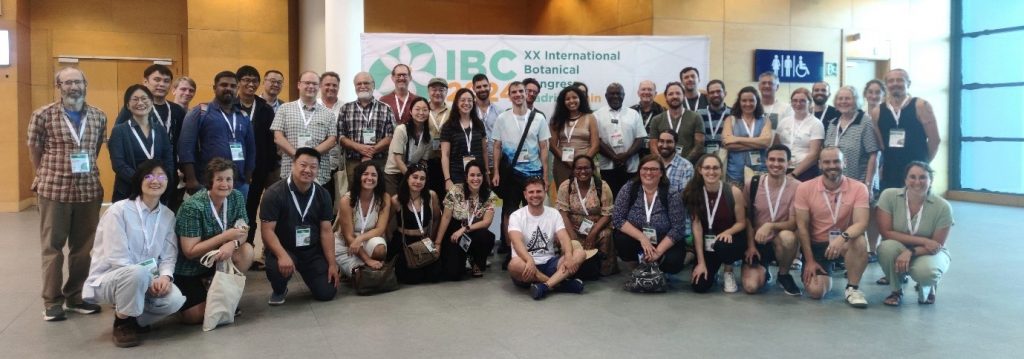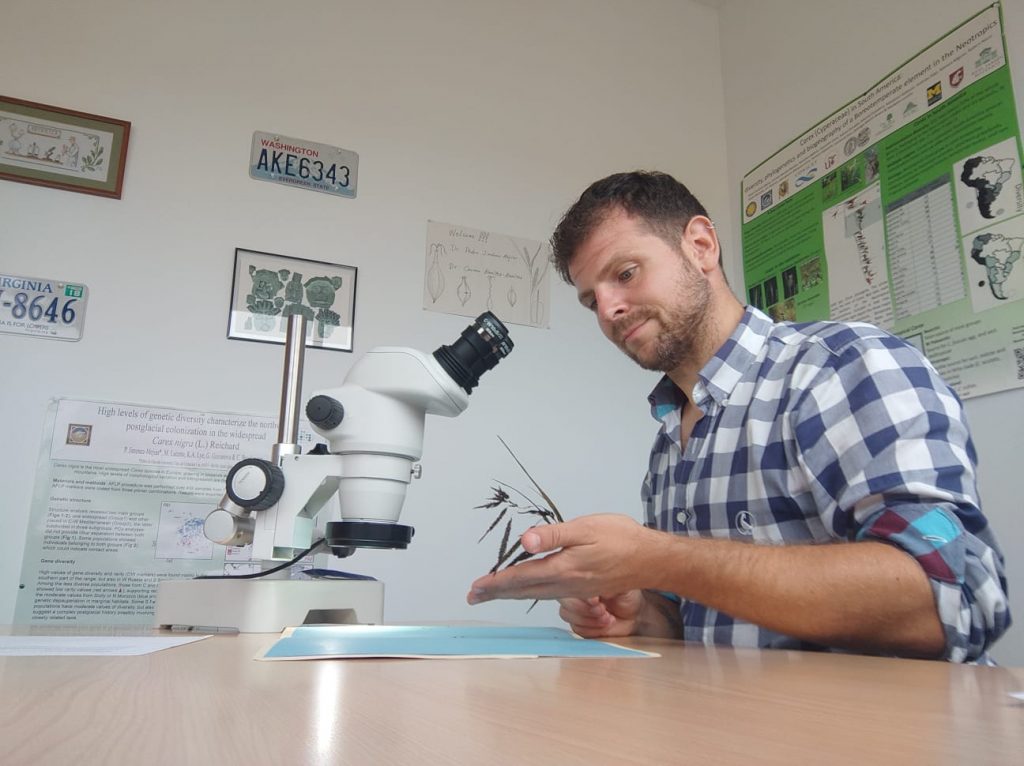Launched in January 2024, iSedge is one of 12 projects funded by TETTRIs, all aimed at co-creating solutions that drive transformative change in taxonomy. With €196,000 in funding, iSedge is focused on the taxonomy of the Cyperaceae family, commonly known as sedges.
The project’s goal is to develop an innovative digital platform that brings together all the available knowledge on sedges into one place, helping both experts and enthusiasts learn more about these important plants and contribute to their conservation.
But why are sedges important, and why should we keep an eye on them?
About iSEDGe
Sedges are among the ten largest families of flowering plants — the Cyperaceae plant family — and play a critical role in ecosystems around the globe. Found in wetlands, grasslands, and forests around the world, these plants help stabilize soil, filter water, and provide homes for many animals. What’s more, they also act as silent allies in the fight against climate change, helping to capture and store carbon dioxide.
Despite their importance, our knowledge of sedges is limited. Information about them is often scattered across various sources and sometimes outdated or incomplete. The lack of detailed and centralized information about sedges makes it challenging for scientists and conservationists to study these plants effectively — and this is where the iSedge project comes in.
“Taxonomy is important, taxonomy matters. But what is unknown cannot be used nor appreciated. That is why initiatives as iSedge are needed: to let people know what is out there”, says Pedro Mejias, iSedge project coordinator.
Stefanie Dekeyzer from the Flanders Marine Institute, a key partner in the project, also reflects on the importance of this work: “Taxonomy is described sometimes as a science and sometimes as an art, but really it’s a battleground,” she says, quoting American journalist Bill Bryson. “As a member of the WoRMS Data Management Team, I can attest that this is a daily reality”, she adds.
Group picture of the iSedge workshop at the XX International Botanical Conference in Madrid (Spain, 22nd July 2024).
The iSedge platform
iSedge is building an online platform – the Global Cyperaceae Database – that offers a modern, comprehensive, global resource for classifying Cyperaceae for users around the world. The goal is to gather information about sedge species in one place to support scientific research and conservation efforts.
This Global Cyperaceae Database leverages the Aphia platform and will link local data to global tools like World Flora Online (WFO). It will provide detailed species entries in an intuitive, easy-to-navigate format, much like a digital field guide.
Managed by the International Sedge Society, the platform will be continuously updated by experts to ensure the information remains accurate and current, making it a reliable and permanent resource accessible to everyone.
And guess what? You can already use it at www.cyperaceae.org !

The iSedge team
Led by Pedro Mejias from Universidad Pablo de Olavides, the iSedge project is a collaborative effort involving four prestigious institutions:
- Universidad Pablo de Olavide: as the project leaders, this team specialises in sedge taxonomy and evolution, leading the development of the digital dashboard and the creation of detailed species entries.
- Flanders Marine Institute: responsible for data management, this team organises and uploads data to the Aphia platform, which will then be displayed through the iSedge digital dashboard.
- Royal Botanic Gardens, Kew: known for their expertise in plant diversity and conservation, this team coordinates the acquisition of new data and images for the dashboard, working closely with the International Sedge Society.
- Universidad Rey Juan Carlos: this team focuses on the systematics and evolution of sedges, helping to curate data and develop species entries.
What has iSEDGE accomplished so far?
Since its launch in January 2024, the iSedge project has made significant towards its goals:
Project kick/off
The journey began with a kick-off meeting in Ostend, Belgium, where project partners, including the Flanders Marine Institute, Royal Botanic Gardens Kew, Universidad Rey Juan Carlos, and Universidad Pablo de Olavide, gathered to outline their vision and next steps.
Organisation of an international workshop
In July 2024, iSedge hosted a workshop at the International Botanical Conference (XX IBC) in Madrid, bringing together members of the International Sedge Society and experts from the global Cyperaceae community. The workshop provided a platform for collaboration and exchange, which has been instrumental in shaping the future direction of the project.
Compiling essential taxonomic information
One of the major accomplishments has been compiling and updating the names of sedge species using data from Plants of the World Online (POWO) and World Flora Online (WFO). This provides a solid foundation for the platform’s species database.
The team has also successfully curated detailed geographic data for the genus Carex, which represents about 40% of the entire sedge family. This data was collected from both digitised sources, such as the Global Biodiversity Information Facility (GBIF), and from herbarium specimens held by botanical institutions around the world. Lastly, researchers have also compiled essential taxonomic information for key sedge groups, including the genus Diplacrum and the Carex section Schoenoxiphium.
Launching the first version of the iSedge platform
Last but not least, the iSedge plaform (www.cyperaceae.org) went live earlier this year, hosting all the data compiled so far. As the project progresses, the platform will be continually updated with new information, making it a constantly evolving resource for sedge enthusiasts and experts alike.
What’s next for iSedge?
In the coming months, the iSedge project will focus on expanding and refining its database. The team will work on gathering and curating taxonomic, geographical, and morphological data for each sedge species. They also plan to include curated genetic sequences and high-quality images showcasing the key features needed for species identification. This information will be progressively added to the iSedge website, so stay tuned for live updates!
An exciting next step is an in-person meeting planned for 22-24 of October at the Universidad Pablo de Olavide. Here, the iSEDGE team will receive hands-on training from the Flanders Marine Institute on managing and editing the website, ensuring the platform remains user-friendly and up-to-date. So keep an eye for future updates!


